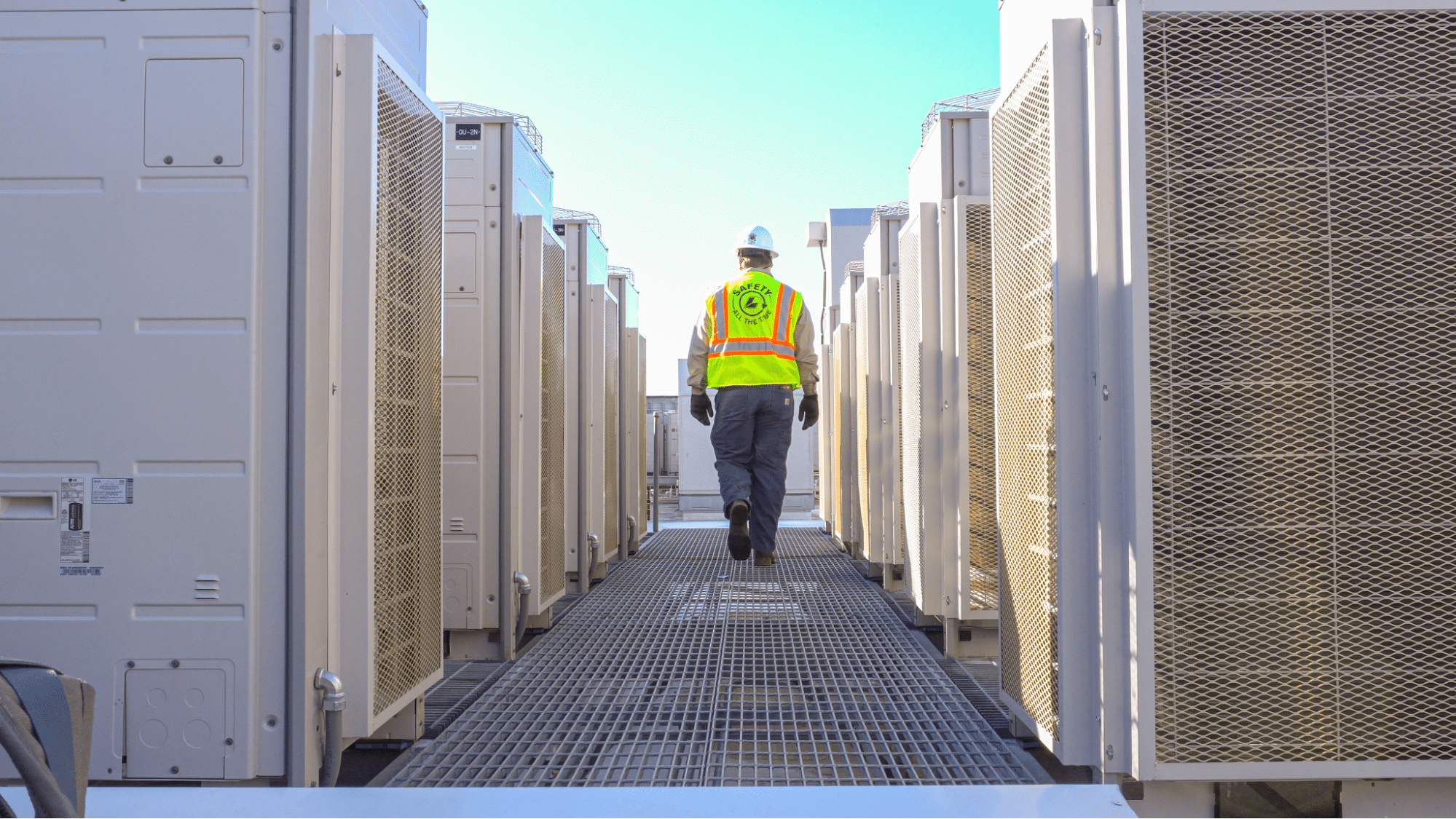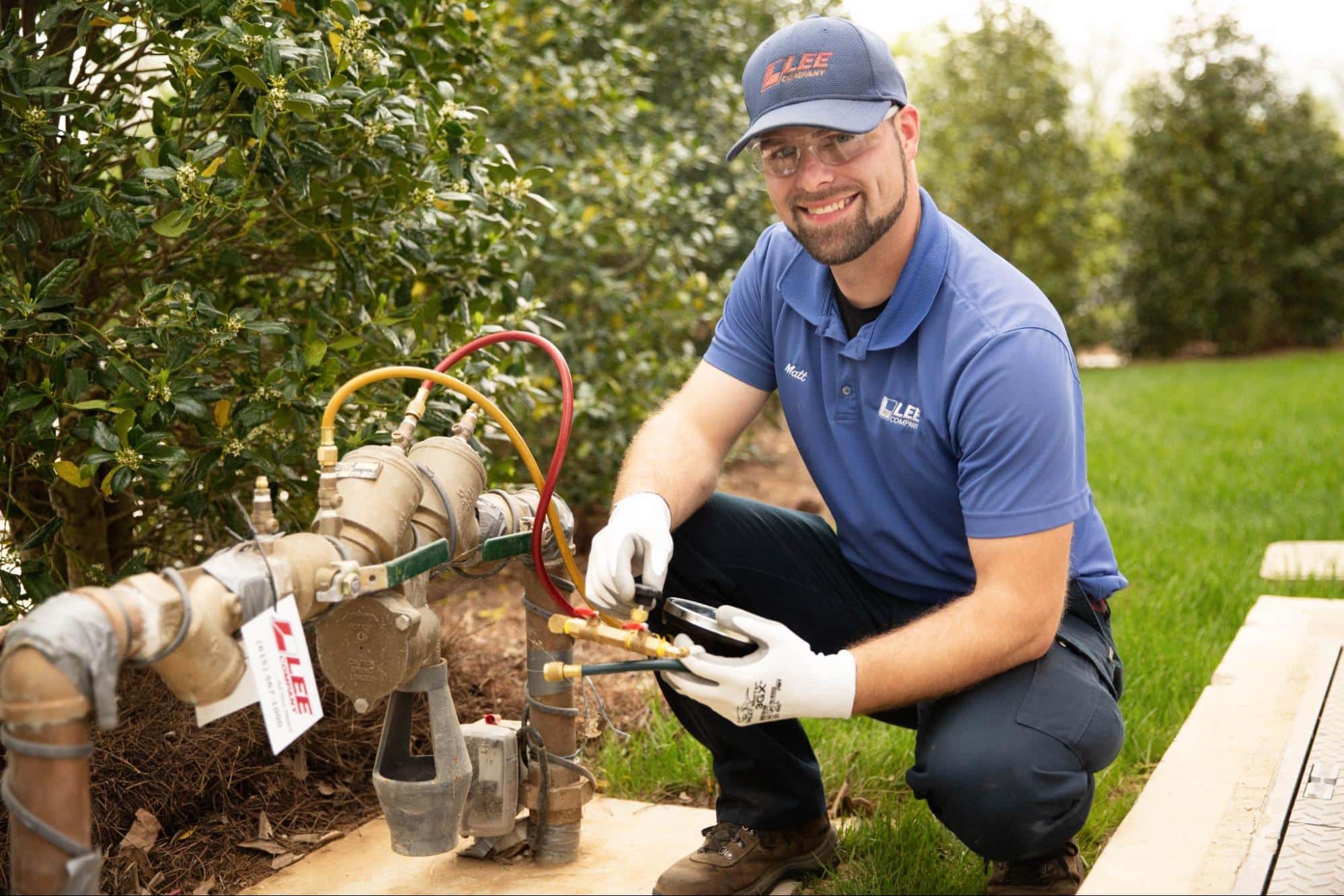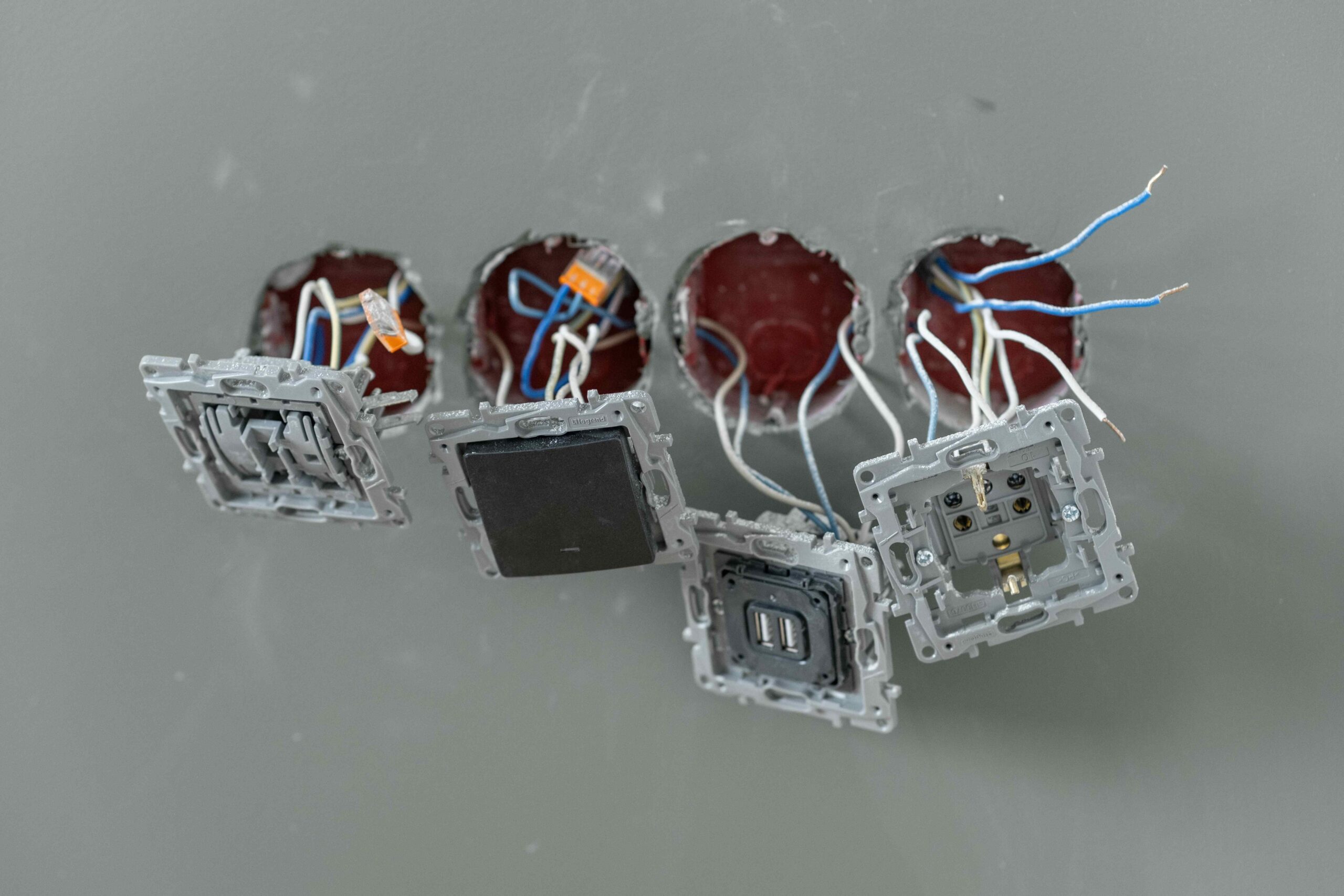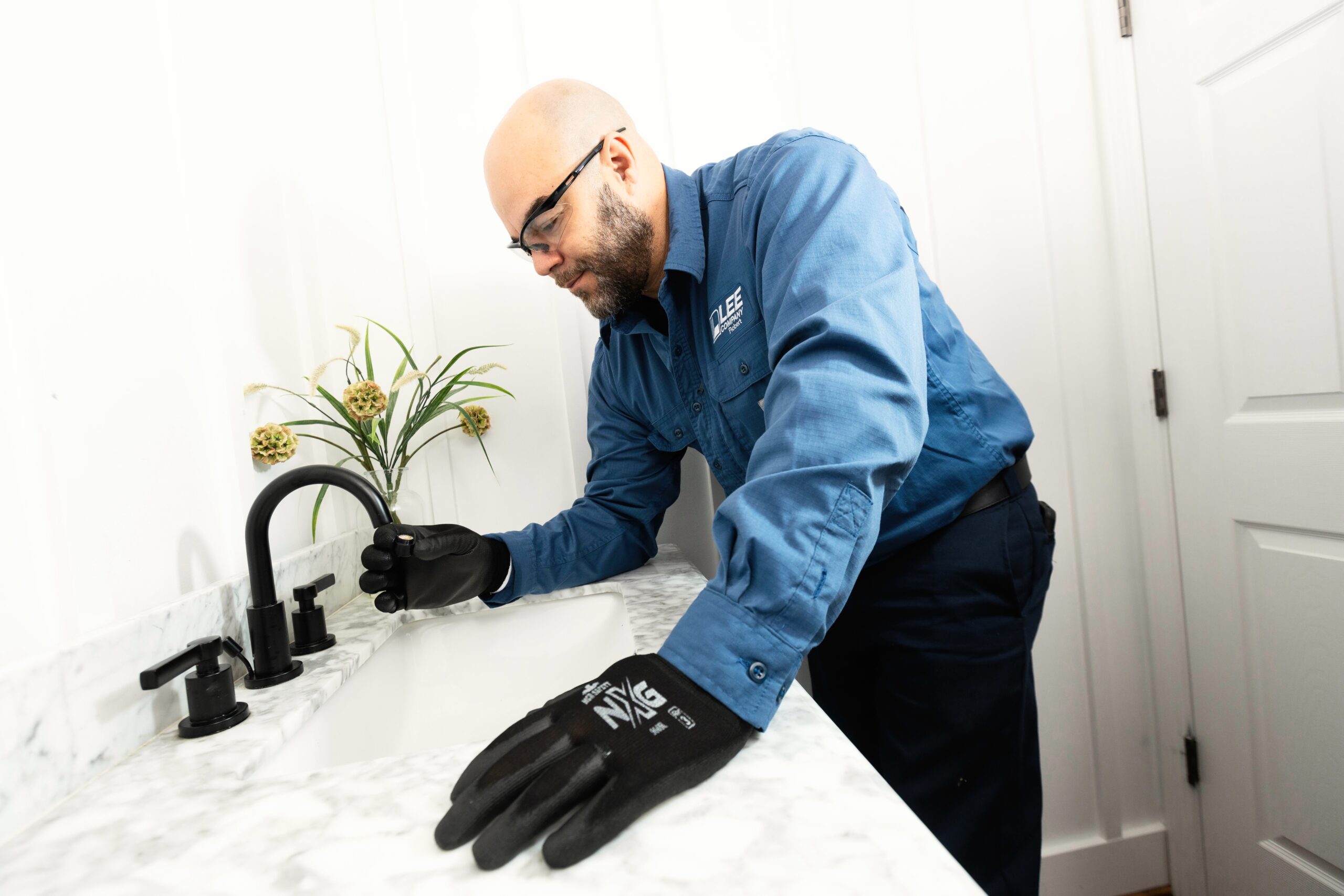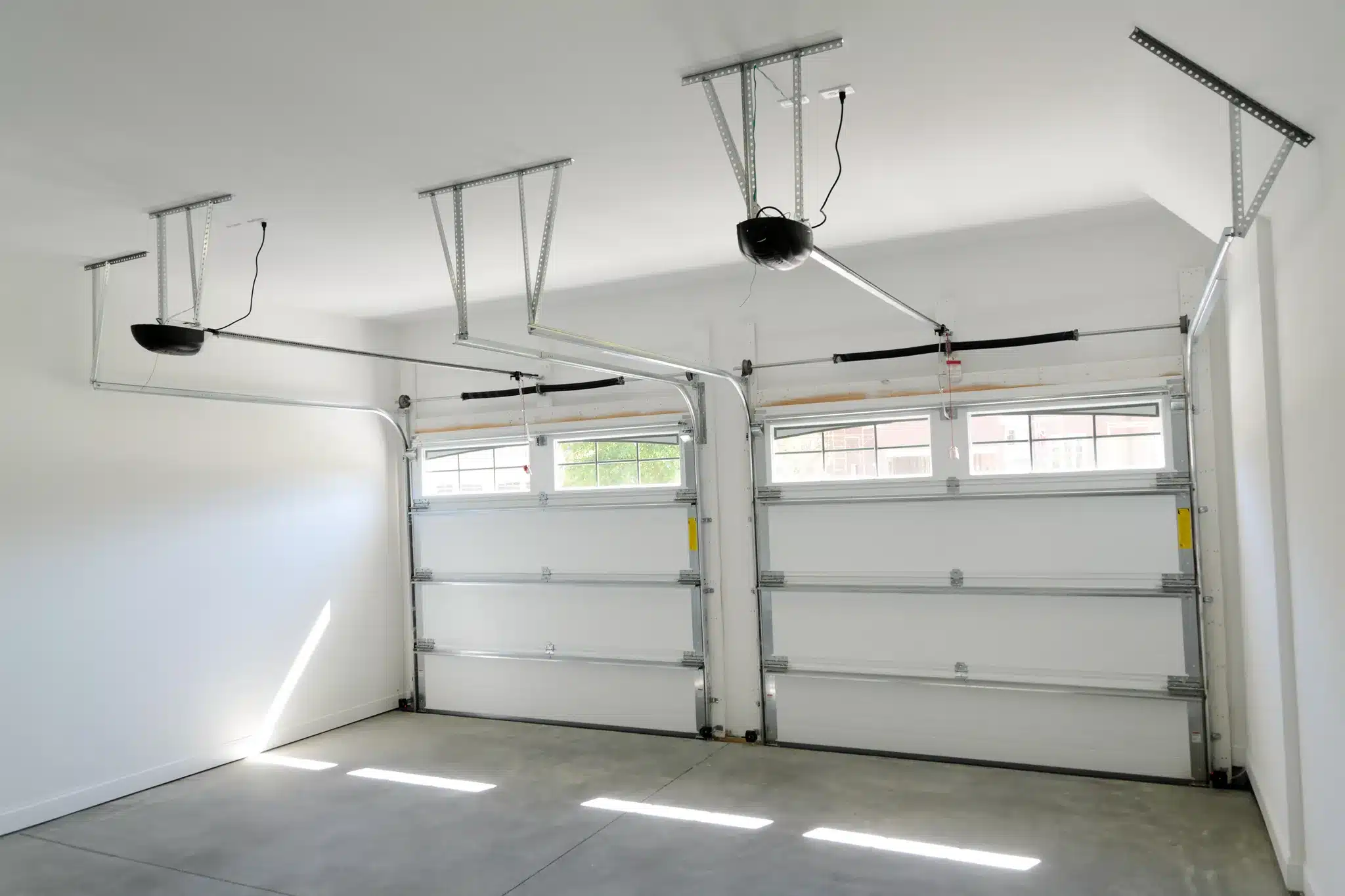When the comfort of employees and customers aligns directly with productivity and revenue, it’s essential that you invest in the right heating and cooling system for your commercial building. We understand that you need to prevent operational disruptions, prioritize the well-being of your staff, and ensure customer satisfaction while also considering cost-saving measures. So how can you strike that balance between providing comfort and saving money?
Energy-efficient HVAC systems offer benefits that extend beyond your balance sheet. They not only maintain pleasant temperatures but also unlock remarkable cost savings, enhance productivity, and contribute to the health and safety of your team.
In this blog, we’ll explore the savings from reduced energy consumption and lower maintenance costs to extended equipment lifespan and potential tax incentives. We’ll also uncover the ways these systems can transform other areas of your operations. By understanding the financial considerations and calculating the return on investment (ROI), you’ll be empowered to make informed decisions for your commercial building.
Understanding Energy-Efficient HVAC Systems and How They Work
Research shows that the typical energy cost for an office building is upwards of $30,000 annually. As much as 39% of the energy consumed in commercial buildings is attributed to HVAC systems. This highlights our significant dependence on them in the workplace. So you can imagine the potential for savings if your HVAC system is more efficient.
Energy-efficient HVAC systems, which include air conditioners, heat pumps, furnaces, and boilers, use energy far more efficiently than standard models. How do they achieve this? They incorporate advanced engineering that controls the flow of air within the system and limits how much energy is wasted.
With more efficient equipment, you can save significant amounts of energy. Cost savings range from 10% to 40% and even up to 70% in buildings that optimize the performance of various components of the HVAC system, like temperature, humidity, ventilation, and air quality control, and integrate them with the overall building design.
Let’s define our terms and delve deeper into the components and features of these systems and how they contribute to energy efficiency.
High-Efficiency Components
Energy-efficient HVAC systems are equipped with components that meet or exceed stringent energy efficiency standards. These can include:
- Electronically commutated motors that help reduce energy consumption by as much as 75%.
- Variable speed drives that allow the fan or blower motor speed to be adjusted depending on the cooling load to save energy.
- Compressors that are designed to run at the optimum capacity instead of full load during peak heat months.
- Heat exchangers that transfer heat more efficiently from the air to the refrigerant, reducing energy consumption.
- Air filters with minimum efficiency reporting values (MERV) of 8 or higher, providing better filtration and improved indoor air quality without affecting system performance.
- Programmable thermostats with advanced features like temperature setbacks, fan-only modes, and multiple-zone capabilities.
Now, this is just the tip of the iceberg when it comes to energy-efficient commercial HVAC systems. There are many other components that can further maximize savings and efficiency.
Advanced Controls and Automation
AI is the buzzword in technology today, but in the realm of HVAC, the integration of advanced controls and automation plays a critical role in enhancing energy efficiency, accuracy, and convenience.
Modern building automation systems (BAS) are equipped with digital sensors that constantly monitor environmental parameters such as temperature, humidity, and air quality. By processing this data in real time, they can adjust the HVAC settings accurately, thereby maintaining optimal conditions and reducing energy consumption by around 29%.
Another advantage of advanced controls lies in their flexibility. They allow for adjustments to equipment settings to align with changing conditions or the operating schedules of the building. For example, your system could be programmed to reduce its activity level at night when there are fewer people in the building.
This kind of automation isn’t available with standard HVAC systems. In fact, many commercial buildings still make manual adjustments to their HVAC systems, leading to higher energy bills and wasted resources.
Predictive maintenance is another key advantage of advanced controls. By continuously monitoring the performance of your HVAC system, they can detect problems early and prevent breakdowns before they even occur. This helps minimize the downtime and disruption to your operations.
Finally, remote monitoring with cloud-based HVAC systems allows you to access real-time performance data from anywhere. This helps further optimize your energy usage and ensure that the system is operating at its best in all conditions. For business owners who want to be working less “in” their business and more “on” it, this automation is essential.
Proper Insulation and Sealing
Energy-efficient HVAC systems are complemented by effective insulation and sealing techniques. Up to 30% of the energy used in commercial buildings is wasted, so paying attention to this part of your overall strategy is essential.
Insulation helps contain the conditioned air, ensuring that it doesn’t escape through walls, windows, or doors, while properly sealed ducts reduce energy loss in the form of air leakage from gaps and cracks. A well-sealed building envelope eliminates air leaks, keeping conditioned air inside and the unconditioned air outside.
Each of these measures reduces energy losses, lightens the workload on your HVAC system, and contributes to significant energy savings.
Energy Recovery Ventilation Systems
Finally, let’s not forget energy recovery ventilation (ERV) systems. ERVs exchange the energy contained in normally exhausted building or space air and use it to treat (precondition) the incoming outdoor ventilation air in residential and commercial HVAC systems. During the warmer seasons, the system pre-cools and removes moisture from the air, while in the cooler seasons, it adds moisture and pre-heats.
The application of ERV technology significantly reduces the load on the building’s heating and cooling equipment, thereby saving energy and reducing operational costs.
How a Commercial HVAC System Impacts Your Bottom Line
We’ve already revealed some surprising statistics related to the cost savings associated with energy-efficient HVAC systems. But let’s dig into the numbers a bit more:
Long Term Savings
Energy costs rank among the top three business expenses for 35% of small businesses, and heating and cooling is the main source of these energy expenses for about 1/3 of these businesses.
So it’s safe to assume that you’re probably forking over a large chunk of your revenue in energy bills each month.
The immediate impact of reduced energy consumption is lower electricity bills. With high-efficiency HVAC equipment, you can see significant savings month over month, which adds up to substantial yearly savings.
According to the U.S. Department of Energy, commercial buildings consume an average of 22.5 kilowatt-hours per square foot annually. With this data, we can make an estimation of what kind of savings a high-efficiency system can bring you:
For instance, a high-efficiency HVAC system could reduce your building’s energy consumption by a reasonable 20%. That means, for a 10,000-square-foot building, you could potentially save about 45,000 kilowatt-hours per year.
Assuming an average commercial electricity rate of 10.31 cents per kilowatt-hour (the rate here in our state of Tennessee in 2023), the annual cost savings would be:
45,000 kilowatt-hours x 10.31 cents/kilowatt-hour = $4,639 per year
Even a small 5% or 10% improvement is enough to make a difference and adds to significant savings over time.
Lower Maintenance and Repair Costs
If you’ve become accustomed to your HVAC system requiring frequent repairs and maintenance, then you know this can be an additional expense that really adds up. With a high-efficiency HVAC system, not only do you save on monthly energy bills, but you also cut down on these regular maintenance and repair costs. High-efficiency systems are designed with better technology and materials that ensure longevity and fewer breakdowns.
Not only that, but you have to consider any potential loss in productivity due to issues with your HVAC system. If you’re dealing with a broken air conditioner in the middle of summer, it’s bound to impact the morale of your employees and their ability to effectively do their work, which could put a strain on your bottom line.
You may even want to consider the potential cost of customer dissatisfaction if the conditions in your commercial building are uncomfortable. Bad reviews, even if they are related to temperature issues and not your product or service, could hurt your brand reputation and cost you customers.
Utility Rebates and Incentives
There are a number of utility rebates and incentives available for businesses that make the switch to energy-efficient systems. In Tennessee, businesses can take advantage of programs like TVA’s EnergyRight Solutions, which offers incentives for businesses that install high-efficiency HVAC systems.
Owners of commercial buildings can also receive federal tax deductions up to $1.80 per square foot if they reduce energy usage by 50% through improvements in:
- Heating, cooling, and ventilation
- Hot water
- Interior lighting systems
This means that, in addition to reducing monthly energy expenses and costs related to maintaining or repairing your HVAC system, businesses can also recover a portion of their investment in energy-efficient upgrades.
***Lee Company is not providing tax advice. The content on this webpage has been prepared for informational purposes only. You should consult a tax professional if you have questions regarding federal tax credits.
Compliance with Energy Efficiency Regulations
When you’re managing a commercial building, you have to consider more than just the cost savings and operational benefits of an energy-efficient HVAC system. You also need to ensure that your HVAC system complies with regulations to avoid hefty fines or other penalties.
As of 2023, there are new energy efficiency standards to be aware of. The new standards will demand higher energy efficiency for all commercial air conditioning systems based on their size and type. This means that these systems will need to work more effectively than they currently do.
And starting December 31, 2024, larger furnace systems will also have increased energy efficiency requirements. So make sure you are ready and informed about these changes.
These laws are constantly being reviewed and amended, so staying up-to-date on the latest requirements is important.
Productivity, Comfort, and Safety
Could your HVAC systems have a direct impact on the productivity, comfort, and safety of those in your building? Absolutely. Your system regulates the quality of your indoor environment, which directly impacts your team’s health and, as a result, their performance.
Overly hot or cold conditions can hinder cognition and productivity, even reducing work performance by 6.6% when temperatures are uncomfortably high.
Plus, these conditions can promote mold growth, increasing the risk of respiratory problems and allergies. Even virus transmission can be affected by your office’s temperature and humidity — and in our post-Covid world, these are all important factors to consider. A well-maintained HVAC system, adhering to appropriate design codes and energy standards, can help mitigate these issues by ensuring optimal air quality and airflow.
But the benefits of good indoor air quality extend beyond avoiding these negatives. Studies show that creating better-ventilated, green office environments can increase cognitive performance by a staggering 61%, reduce health complaints by 30%, and even enhance the quality of sleep. That means fewer sick days, more productivity, and improved morale for your team! What business owner wouldn’t want that kind of competitive advantage?
Turn HVAC Upgrades into Profit with Lee Company
When it comes to running a commercial building, every decision has financial implications. Upgrading your HVAC system for energy efficiency is no different. While the initial investment can seem like a big commitment, the long-term benefits, and ROI make it a smart choice for forward-thinking facility managers.
Yes, installing a new HVAC system or upgrading an existing one requires an upfront investment. Still, the energy savings you gain can offset this cost, often leading to a payback period that is shorter than you might expect. And as we’ve discussed, energy-efficient systems tend to have lower operating costs, reducing your building’s overall expenditure over time.
And our role doesn’t end with installation. Our facilities management services ensure your new equipment runs efficiently and effectively, providing optimal comfort and productivity for building occupants while keeping energy costs low. Contact Lee Company today to find out more about how we can help you turn your HVAC upgrades into profits.
